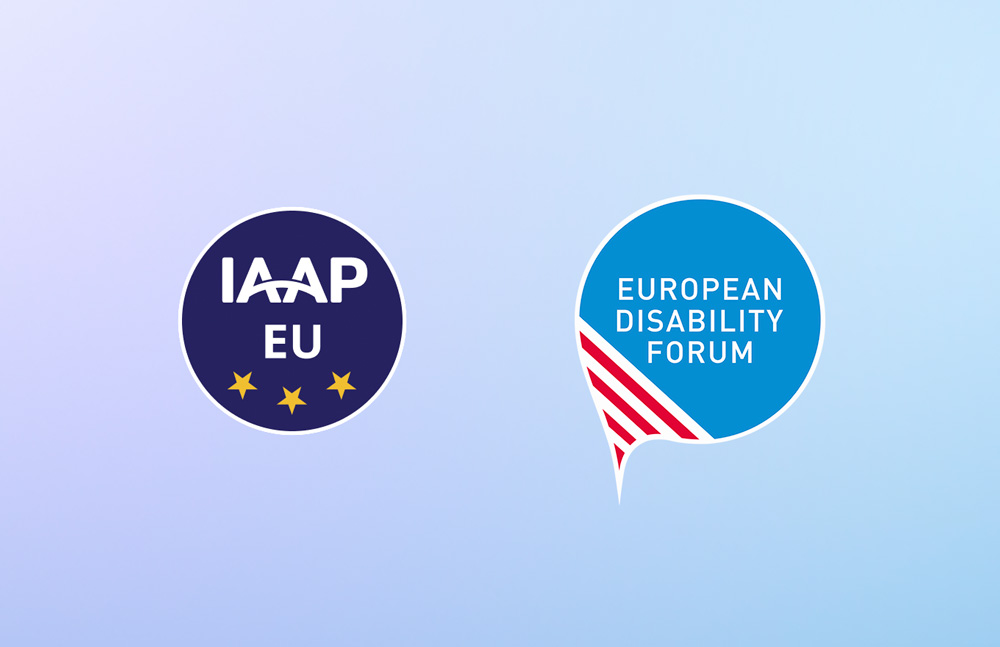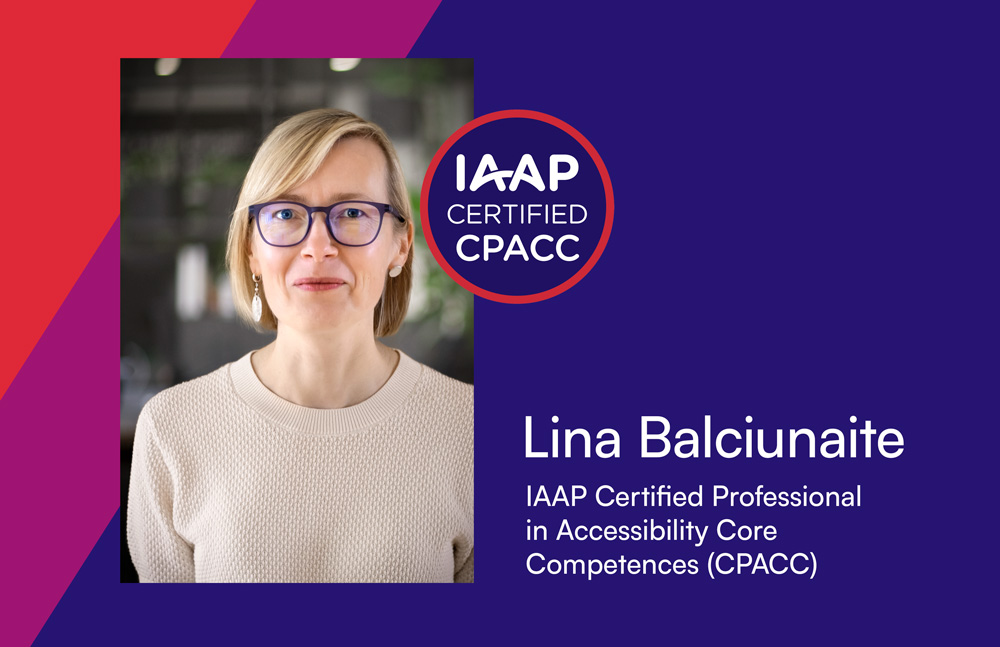8 Common Digital Accessibility Implementation Mistakes

In the dynamic realm of digital design and development, the concept of accessibility can often feel like navigating a labyrinth filled with complex pathways and hidden pitfalls. It's a landscape where even the most well-intentioned creators can find themselves perplexed, struggling to tackle the challenge of crafting truly inclusive experiences.
In this article, we delve into some of the most common accessibility implementation mistakes, shedding light on how to avoid them. Whether it's about taking wrong steps or missing crucial ones, our aim is to help you grasp the nuances, avoid potential mistakes, and embrace an ongoing journey of improvement.
Mistake #1: Considering accessibility as an afterthought
One prevalent misstep is treating accessibility as an afterthought once a project, such as a website, is completed. Attempting to rectify accessibility issues post-development not only proves to be more challenging but also substantially more costly. The intricacies of rebuilding design elements to align with accessibility standards can be overwhelming and resource-intensive.
Instead of relegating accessibility to the final stages, proactively integrate accessible design principles during the initial stages.
And if you're just starting to learn about accessibility and want to implement in into your digital platform, keep in mind that sometimes it's more economical to build a new digital platform with accessibility as a foundation, rather than attempting to correct numerous errors on an existing one.
Mistake #2: Relying on accessibility toolbars
Accessibility toolbars, also known as overlays, components, plugins, or add-ons, emerge as external tools. Once integrated into a website, they superimpose an additional layer of code with the intent of enhancing accessibility. Consequently, a button bearing an icon appears or is manually added on the top, side or bottom of the webpage. Upon interaction, this button unveils a menu of alterations to the website's presentation and operations. As an illustration, it may allow adjust font size, color palette, and remove images or animations on the webpage.
Numerous providers offer these accessibility plugins, and among the notable ones are Userway and Accessibe. While these toolbars might seem like convenient solutions, they often fall short of providing genuine accessibility. They may address only a fraction of accessibility concerns and can even introduce new usability issues. We have written an extensive article on accessibility toolbars, so make sure to check that out.
Instead of relying on third-party accessibility plugins or tools, directly incorporate accessibility features and design principles into the platform itself.
Mistake #3: Creating separate versions for people with disabilities
Despite progress, a prevalent practice, particularly in public sector and government institutions, involves creating separate webpage versions for people with disabilities. Nevertheless, this approach to accessibility can lead to user segregation and directly conflict with the core principle of inclusivity.
This practice contradicts the essential principles of universal design, which find their foundation in the United Nations Convention on the Rights of Persons with Disabilities. Universal design, also known as design for all, places emphasis on creating products, environments, programs, and services that are inclusive for every individual, regardless of their abilities.
In alignment with this perspective, the Web Content Accessibility Guidelines (WCAG) also discourage the adoption of such practices.
Instead of creating separate webpage version for people with disabilities, focus on designing a single version of a digital platform that is accessible and usable for everyone.
Mistake #4: Using automated tools as the sole testing method
Automated accessibility testing tools are software applications designed to analyze digital content, such as websites, applications, and documents, for compliance with accessibility standards and guidelines.
Some common examples of automated accessibility testing tools include WAVE Web Accessibility Evaluation Tool and IBM Equal Access Accessibility Checker.
While they are helpful for quickly detecting common accessibility problems, they may not capture all aspects of accessibility and might occasionally produce false positives or miss certain issues.
To ensure practical accessibility, actively involve people with disabilities in the design, development, and testing phases of digital platforms, products, or services.
Instead of relying on automated tools only, collaborate with people from diverse backgrounds and abilities to perform usability testing.
Mistake #5: Implementing custom shortcuts
When it comes to accessibility, a common error is the utilization of custom shortcuts instead of standardized ones. Custom shortcuts can clash with the operational dynamics of assistive technologies like screen readers, which are optimized for standard keyboard shortcuts. Thus, this misalignment can generate confusion and navigation difficulties for users who depend on these tools.
It's worth noting that individuals with cognitive disabilities, who are sighted, tend to be well-versed in standard shortcuts. Introducing an abundance of custom shortcuts could potentially overwhelm their cognitive capacities. Furthermore, such custom shortcuts might introduce a layer of frustration for users reliant on speech input.
Instead of implementing custom shortcuts, utilize standard shortcuts to achieve optimal accessibility and compliance with WCAG guidelines.
Mistake #6: Ignoring content accessibility
Accessibility isn't solely about technical aspects; content plays a crucial role too. Failing to provide alternative text for images, creating complex functionalities that cannot be recognized by assistive technologies, employing hard-to-read text, or using poor color contrast can severely hinder users with disabilities.
Instead of ignoring content accessibility, educate visual and textual content creators on accessible content practices.
Mistake #7: Prioritizing aesthetics over accessibility
While aesthetics are important, they should never come at the cost of accessibility. Flashy animations, intricate designs, and complex layouts can hinder usability and distract users from your core content.
Instead of placing aesthetics above accessibility, strive for a balance between the two to create an engaging yet usable platform.
We have written an extensive article on aesthetic appeal vs. accessibility, so make sure to check that out.
Mistake #8: Lack of continuous accessibility updates
Web technologies evolve, and so do accessibility standards like Web Content Accessibility Guidelines (WCAG). Failing to keep up with the latest guidelines and updates can lead to outdated accessibility practices.
Instead of designing and then neglecting your digital platform, make it a practice to consistently review and update its accessibility features.
Final thoughts
As we conclude this exploration of accessibility implementation mistakes, it becomes apparent that the journey toward inclusivity in digital design and development is intricate. By uncovering prevalent accessibility mistakes and offering insights to navigate around them, we aim to provide a clearer perspective.
As you move forward, remember that accessibility is not a fixed destination but rather a continuous journey of learning, refining, and innovating. Whether you're an experienced web designer, developer, product or content manager, brand officer, or someone new to this journey, your dedication to improvement stands as a testament to your commitment in fostering a more inclusive digital world for all.
June / Karlove offers accessibility compliance, accessibility knowledge and culture, and accessible design and development services.
Schedule a discovery call to learn how to guarantee your company's digital products are accessible to individuals with disabilities.
Newsletter subscription
Twice a month we send insights, event updates, and valuable resources on best accessibility practices in Lithuania, the Baltics, and the EU market. Subscribe to get the latest knowledge and stay informed.




